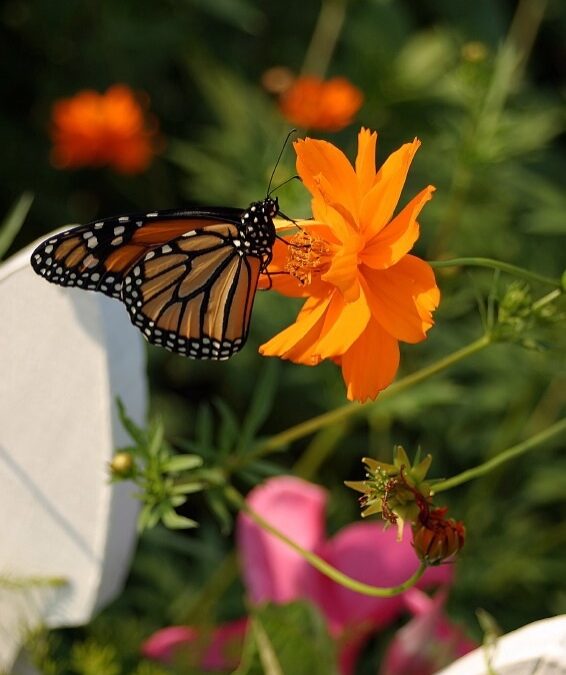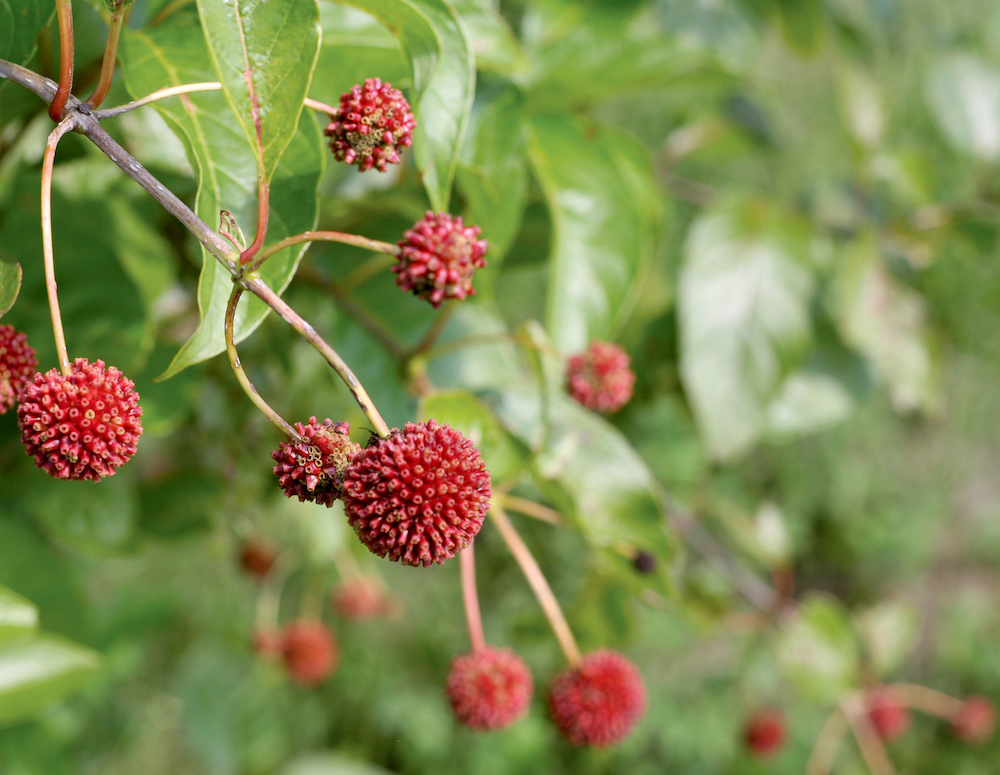
Sugar Shack Buttonbush in fall. Photo courtesy Proven Winners
This is National Pollinator Week, a great time to think about what plants in your landscape nourish these important insects and birds. Plants nourish these critters with nectar or pollen. Add a water source and the beauties of nature will visit regularly. Here are three, easy-to-grow North America native plants to attract and support pollinators.
Native Annual for Pollinators
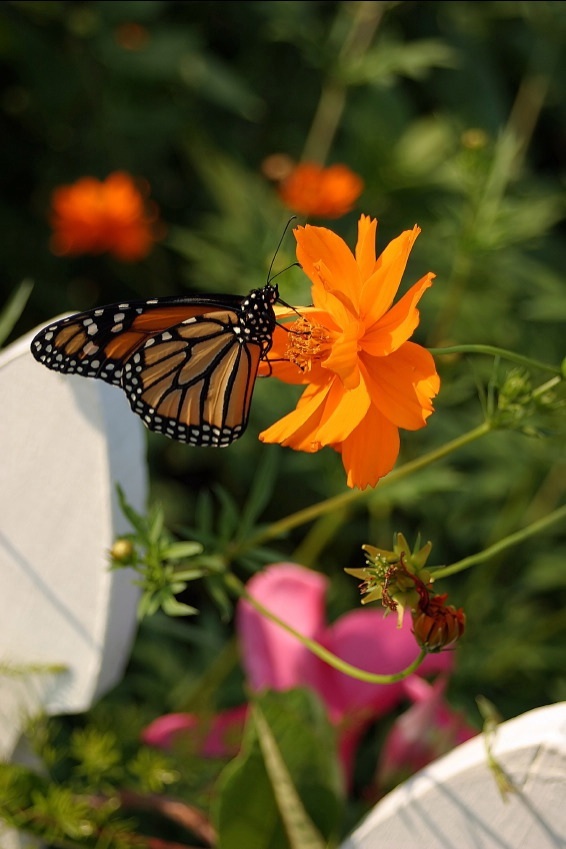
Orange cosmos.
Cosmos (Cosmos bipinnatus), sometimes called garden cosmos, has daisy-like flowers in pinks and whites. Cosmos (Cosmos sulphureus), called yellow cosmos, has flowers in the yellow and orange range. The latter is a bit shorter than garden cosmos and works well in a container. Grow cosmos in full sun.
Cosmos are favorites as a cut flower. Easy to grow from seed, or in spring, you can find transplants at garden centers. They may self-sow a bit, but would never be considered aggressive or invasive. Select for color and height.
Native Perennial for Pollinators
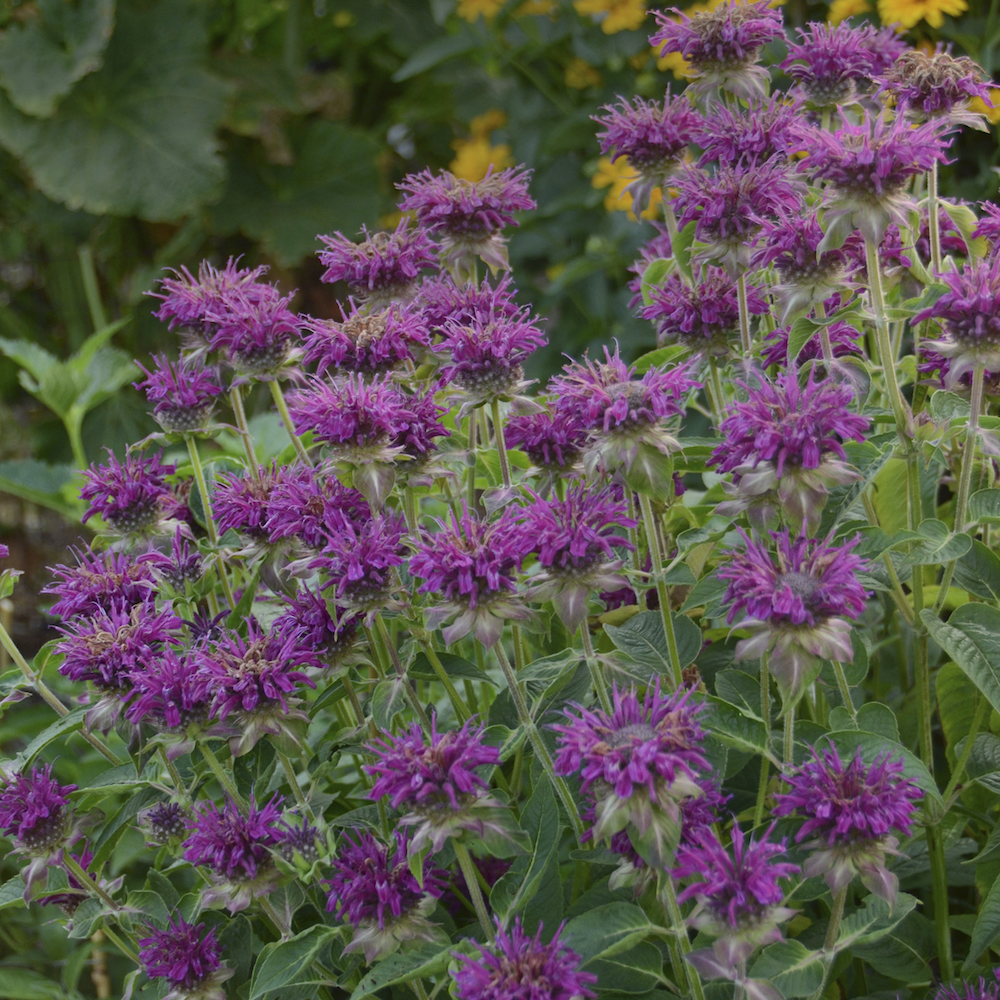
Purple Rooster monarda. Photo courtesy PerennialResource.com
Lots of perennials attract pollinators, but one that seems to please a lot of them is Monarda, also known as bee balm and bergamot. There are 14 monarda species that are native, including wild bergamot (M. fistulosa), spotted bee balm (M. punctata), sometimes called horsemint, and M. didyma. Wild bergamot is frequently planted in rain gardens. Hummingbirds regularly visit these plants.
Many of the newer varieties on the market have M. didyma strains, which have improved their resistance to powdery mildew, a fungus disease that commonly afflicts bee balm. The disease is more of an eyesore than a plant killer.
When you smell bee balm, you might be reminded of the fragrance of Earl Gray tea, which is made from a bergamot. One other thing. Folklore has it that the flowers of bee balm soothe bee stings, hence the common name.
Mt. Cuba Center in Delaware recently conducted a study on monarda, including resistance to diseases. The top-performing cultivars include: Monarda fistulosa ‘Claire Grace’; and hybrids ‘Dark Ponticum’; ‘Violet Queen’; ‘AChall’ (Grand Marshall); ‘Judith’s Fancy Fuchsia’; ‘Colrain Red’; ‘Raspberry Wine’; M. ‘Purple Rooster’; ‘On Parade’ and ‘Gardenview Scarlet’.
Another favorite cut flower, select for color and height. Plant in full sun with good air circulation.
Native Shrub for pollinators
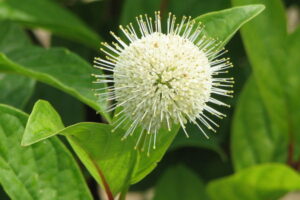
Fiber Optics buttonbush. Photo courtesy FirstEditionsPlants.com
Buttonbush, found along the banks of streams and rivers and in wetlands, is a big plant. Common buttonbush (Cephalanthus occidentalis) is easily in the 6 to 12 foot tall and wide range. That’s usually too large for most urban and suburban landscapes.
Fortunately, two new varieties are half that size yet retain all the wonderful attributed of the parent species.
White, 1-inch round fragrant flowers look like pincushion balls when they bloom in summer. Reddish-brown fruits, which look like buttons, follow the flowers. Buttonbush is deer resistant, too. Although buttonbush is a wetland plant, it does perfectly well in garden beds or shrub borders in the landscape.
Fiber Optics from First Editions Plants, is about 5 feet tall and wide. It has a compact, rounded form. Green leaves turn yellow in fall.
Sugar Shack from Proven Winners ColorChoice Flowering Shrubs is in the 3 to 4 foot tall and wide range. New growth flushes red before leaves turn bright green.
Call a pro
If you’d like an assessment of your landscape to see how you can incorporate these or other plants, please contact your Holeman landscape professional.

